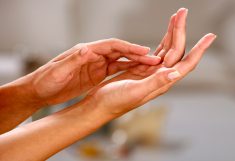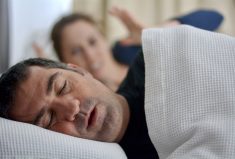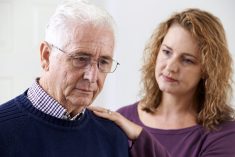From time to time, head lice infestations become news stories, especially when treatment “failures” occur. You probably feel itchy right now just thinking about them!
Head lice, scientifically known as Pediculus humanus capitis, have been around as long human beings have existed. After all, lice need human blood to live.
Head lice also exist worldwide, and they can affect anyone. Actress Jennifer Garner and model Heidi Klum tell stories of their children being infested.
Head lice are parasites that feed on blood and leave itchy spots around the back and side of your child’s scalp. Once the adult female louse has fed, she lays eggs attached at the scalp to hairs. These eggs, or “nits,” will eventually hatch into new lice.
Read Also

Ground rules for farm family communications
Establishing meeting ground rules can help your family find ways to communicate that work for your farm. Here are some…
As well, because your hair continues to grow after the eggs are laid, the height of the nits above the scalp gives you an idea of the length of time of the infestation.
At one time, head lice were considered a normal part of life, but by the 1800s the first reports of remedies for treating these parasites started to appear. Unlike body lice, head lice do not carry other diseases, although they are still considered undesirable and unpleasant.
Children are more often affected because they experience the close contact needed for the person-to-person transmission, and they more often share headwear and hair clips.
Adults are less at risk because they don’t necessarily have the close personal contact needed for the spread, except for adults who live in the same household as affected children.
It’s an important point worth repeating: head lice don’t mean that a home is unclean, they mean that this is a home where children play together.
While you may think head lice are common, only about one to three per cent of school children are affected annually.
Lice are tiny, about the size of a sesame seed and you may need a magnifying glass and bright light to see them. The nits are more visible especially against darker hair.
Lice treatments include permethrin, pyrethrins with piperonyl butoxide, and isopropyl myristate/cyclomethicone, all of which are considered effective and non-toxic. Treatment failures can occur, but are not usually caused by resistance to the treatment. While resistance has been reported in some countries where pediculicides are heavily used, there has not been a reported occurence in Canada.
More often, the failure can be explained by improper application; for example, the treatment not being applied completely from the roots to the hair ends, not being left on the hair for the required time, not being reapplied in seven to 10 days, or being reapplied sooner than seven to 10 days.
Treatment needs to include manual removal of nits. A fine-toothed nit comb is ideal for this. Nits are attached to hair with glue, so soaking the hair with white vinegar for about half an hour will loosen the nits and make removal easier. Not removing the nits or even a reinfestation may be mistaken for a treatment failure.
Perseverance and patience are both needed, along with nit removal and careful following of treatment instructions.
Home remedies are numerous, but few are successful. Olive oil, mayonnaise, and petroleum jelly are supposed to smother lice, but this is difficult to achieve while being very messy.















